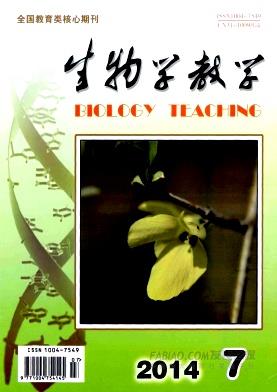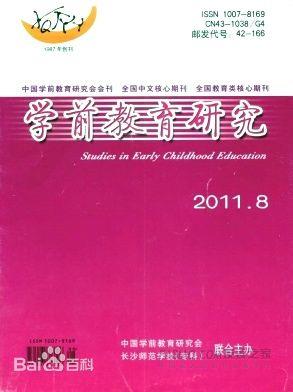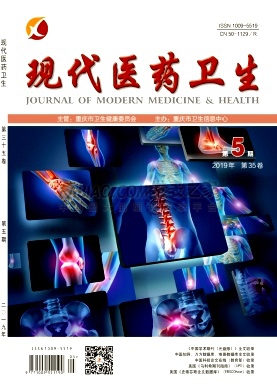There are books that are read and books that are admired, and they are not necessarily the same books.“Worldmaking,”by David Milne, seems destined to be more admired than read.Its subject alone tends to induce a respectful but glazed the topic is intellectually hefty1hefty很大的;超出一般的。, the book itself is heftier still(it weighs in at more than 500 pages of text), and the print is so small that readers over 40 would do well to keep their magnifying glasses handy.
[2]This is a shame, since readers who can get past the book’s forbidding presentation will find much to , a historian at Britain’s University of East Anglia, offers up detailed and often surprisingly moving portraits of nine prominent American foreign policy thinkers, from Alfred Thayer Mahan and George Kennan to Henry Kissinger and,finally, Barack portrait is rich in detail, contextualizing its subject’s understanding of America’s role in the world and offering a glimpse into the debates and dilemmas that have troubled policymakers for a century or more.
[3]We begin in 1949, in medias res2in medias res直接切入本题;单刀直入。,as Kennan, the State Department’s director of policy planning staff, and his deputy, Paul Nitze, struggle to develop a critical policy recommendation for President Harry Truman: In light of evidence that the Soviets had tested an atomic weapon late in 1949, should the United States push forward with its own efforts to develop a hydrogen bomb?Milne quotes Churchill’s observation3observation(尤指据所见、所闻、所读而作的)评论。that the hydrogen bomb, with its worlddestroying potential, would be as far removed from the atom bomb as the atom bomb was“from the bow and arrow.”
[4]For Kennan, deciding whether the United States should seek to develop fusion bombs could not be reduced to a mere question of strategy; it was a moral issue, freighted with near-theological , Kennan“crafted a seventy-nine-page paper, rich in history and philosophy,”counseling“against building this fearsome weapon.”Fusion weapons4fusion weapon核武器主要包括裂变武器(第一代核武器,通常称为原子弹)和聚变武器(亦称为氢弹,分为两级及三级式)。, he argued, could lead only to wars that no one could win: No nation could be trusted with a weapon so cited Shakespeare’s“Troilus and Cressida”:
And appetite, an universal wolf,
So doubly seconded with will and power,
Must make perforce an universal prey,
And last eat up himself.
[5]The solution, to Kennan, lay in calling on all states to disavow fusion weapons and give control over nuclear research to an international organization.
[6]Kennan’s protege Nitze saw things quite had little use for philosophy or poetry; to him, the matter was Soviets surely would not stop at the atom bomb, so the United States couldn’t afford to stop there, Cold War’s cold logic required an arms race; peace, precarious or not,could best be secured only through what later came to be called the doctrine of mutually assured destruction.
[7]The face-off between Kennan and Nitze is compellingly Milne makes no secret of his own views(Kennan’s call for the United States to abandon H-bomb development was“well-intentioned but dangerous,”he writes), his sympathy for the cerebral5cerebral大脑的;理智的。and bookish Kennan is just as similar empathy characterizes his examination of the book’s other central characters, shining through even in the least likely of inclined to dismiss Paul Wolfowitz as a neoconservative warmonger6warmonger战争贩子,好战者,战狂,好战分子。, for instance, may find themselves in grudging7grudging勉强的,不情愿的。sympathy with the idealistic young scholar(who marched for civil rights in the early 1960s, then“dropped his tenure-track8tenure-track终身教职;终身教授。job at Yale as if it were a paper route”when offered the opportunity to serve in the Arms Control and Disarmament Agency.)
[8]Then there is , whose skepticism of America’s ability to impose its way of life on other nations is often missed by those who caricature9caricature滑稽地描述。him as a flag-waving advocate of American imperialism, and Obama, now lambasted10lambast严厉申斥。on the right by critics who view him as passive and indecisive, even as critics on the left condemn his pitilessly lethal approach to quotes a passage in Obama’s early memoir,“Dreams From My Father,”that seems, in hindsight11in hindsight事后想来。, remarkably a college student poring over12pore over集中精神阅读。the classics of African American literature, he was dismayed:“In every page of every book, in Bigger Thomas13小说《土生子》(Native Son)的男主人公。《土生子》是享誉美国文坛的黑人作家理查德·赖特1940年创作的长篇小说,被认为是黑人文学中的里程碑。别格·托马斯过着饥寒交迫的生活,在白人眼中是“坏黑鬼”,而他对白人则怀着又恨又怕的心理,后来无意中杀死了一个白人姑娘,被判死刑。and invisible men14此处化用了美国著名黑人作家拉尔夫·艾里森(Ralph Ellison,1914—1994)的代表作《看不见的人》(Invisible Man,1952)的书名。与理查德·赖特的“抗议小说”(the black protest novel)不同的是,艾里森《看不见的人》将种族问题置于错综复杂的社会结构中,来研究“我们(指黑人)是谁”的问题。, I kept finding the same anguish, the same doubt; a selfcontempt that neither irony nor intellect seemed able to deflect15deflect转移;引开。...only Malcolm X’s autobiography seemed to offer something repeated acts of self-creation spoke to me;...his unadorned insistence on respect promised a new and uncompromising order, martial16martial尚武好战的。in its discipline, forged through sheer force of will.”
[9]It is when Milne turns to theory that“Worldmaking”falls somewhat rightly dismissive of the reductionist17reductionist主张把高级运动形式还原为低级运动形式的一种哲学观点。它认为现实生活中的每一种现象都可看成是更低级、更基本的现象的集合体或组成物,因而可以用低级运动形式的规律代替高级运动形式的规律。claim that foreign policy theorists are divided between realists and idealists, Milne uses his opening vignette18vignette(清晰展示人物特征、局势等的)短文,简介。—the standoff between Kennan and Nitze—to introduce his own alternative binary19binary二,双,复;双体,复体。:“art versus science.”
[10]The artists of American foreign policy, represented by Mahan, Kennan, Walter Lippmann, Kissinger and Obama, view the world with a sense of“tragedy and caution,”combined with a“reluctance...to depart from observed historical precedents.”They see abstract theorizing as foolhardy20foolhardy莽撞的。, and view intuition and humility as the sole touchstones in an uncertain, unpredictable , the scientists, typified by Woodrow Wilson, Charles Beard, Nitze and Wolfowitz, believe they can both discern and transcend the patterns of see the world as malleable21malleable可塑的;易受影响(或改变)的。,capable of being remade through the joint application of American power and American moral rectitude22rectitude正直;诚实。.
[11]But as Milne acknowledges, the art/science binary is as susceptible to criticism as the realist/idealist ,for instance, is introduced in the first pages of“Worldmaking”as a man convinced that a to eschew23eschew避免。the hydrogen bomb — on moral grounds — would persuade the Soviets to do the conviction that an American moral vision could change the course of world history is, in Milne’s framework, surely the vision of a scientist, not an artist; it smacks24smack啪的一声使劲放(或扔、甩等)。of grand Wilsonian dreams, not the caution and attentiveness to precedent that Milne sees as characterizing acknowleges this but excuses Kennan’s deviation from his artist role by noting that“the fate of the world was deemed to be at stake.”For a book dedicated to the proposition that much about American foreign policy can be explained by the art/science binary, it seems rather odd to open with a vignette in which a leading fi gure plays a distinctly out-of-character role.
[12]But Milne would prefer to have it both ways:“The individuals who populate this book exhibit these disciplinary tendencies to varying degrees,”he admits,and“this is no clear-cut binary.”Some,after all,“are partial to both artistry and scientism,”and the art/science binary is thus“intended as an illuminating background theme, not as a reductive master narrative.”That’s good, since if most of the individuals profiled turn out to fall less than neatly into one of his two categories,the art/science binary doesn’t tell much of a might as well say that it’s all a matter of personality, or that policy has been marked by a divide between the overly humble and the overly confident, or the pessimistic and the after more than 500 pages,“Worldmaking”leaves the reader suspecting that almost any such binary might have been defended with equal success.
[13]Many readers also will quibble with25quibble with(为小事)发牢骚。Milne’s choice of top foreign policy a single woman makes his list, for the same, it’s a good policy aficionados26aficionados(某方面的)狂热爱好者。will be tempted to buy it,place their pristine27pristine崭新的。copy on a coffee table and speak of it in hushed, reverential tones.I suggest reading it instead.■
有些书让人阅读,而有些书让人景仰,这两类书未必有交集。戴维·米尔恩的《构建世界》注定是让人景仰多过让人阅读的。单是书的主题就会让读者因敬畏而陷入木然的沉默。理论上,一本书如果主题宏大,它本身也会是大部头(这本书全文长达500多页),并且印刷字体很小,年过40岁的读者需手持放大镜才能阅读。
[2]这太可惜了,因为读者一旦克服其令人生畏的外表,就能享受其中。米尔恩是英国东安格利亚大学的一名历史学家,他细致描绘了9位美国杰出的外交政策思想家,其描写出奇地感人,其中包括阿尔弗雷德·赛耶·马汉、乔治·凯南、亨利·艾尔弗雷德·基辛格和巴拉克·奥巴马。该书把各主人公对美国所扮演角色的不同理解置于全球背景下,对每个人物进行了详实描写,窥探那些曾困扰了决策者一个世纪乃至更长时间的争论和困境。
[3]我们直接从1949年说起,在一系列事件中,美国国务院政策规划司司长凯南及其副手保罗·尼茨在为哈里·杜鲁门总统提出一项重大的政策建议时遇到困难:证据显示,苏联已于1949年底试验了一件原子武器,美国是否应努力研发一枚氢弹呢?米尔恩引用了丘吉尔的话说,氢弹具有毁灭世界的力量,其与原子弹的差别就像原子弹与“弓箭”的差别那么大。
[4]对凯南而言,美国不能仅仅将是否推进氢弹研制简化为一个战略问题。这是个道德问题,具有近乎神学的意义。最后,凯南“起草了一份含大量史实和哲学思想的文件,长达79页”,奉劝总统“不要制造这种可怕的武器”。他声称,聚变武器只会引发战争,而战争没有赢家:如此危险的武器放在任何一个国家手上都无法让人放心。他引用了莎士比亚《特洛伊罗斯与克瑞西达》中的一段话:
欲望,这一头贪心不足的饿狼,
得到了意志和权力的两重辅佐,
势必会把全世界供它的馋吻,
然后把自己也吃下去。
[5]对凯南而言,解决方法是呼吁各国抵制氢弹研制,并将核研究的管控权交由一个国际组织。
[6]凯南的部下尼茨对此看法截然不同。尼茨没有引用哲学思想或诗歌;对他来说,问题很简单。苏联无疑不会止于研制原子弹,因此美国也不能就此打住。冷战的残酷逻辑要求双方进行一场军备竞赛;和平——不论它是否稳定——只能凭借后来被称为“互有把握摧毁对方的信念”得到最佳保障。
[7]米尔恩笔下,这场凯南和尼茨的对峙引人入胜。尽管米尔恩态度明确(他在书中写道,凯南呼吁美国放弃研制氢弹的行为“出于善意但极其危险”),但他显然对理智又学究的凯南感同身受。他也带着类似的同理心去审视书中其他主人公,这种同理心甚至渗透到了全书最不可能出现的地方。例如,读者会发现,他们曾鄙夷保罗·沃尔福威茨是个新保守主义战争贩子,如今却能勉强理解这个充满理想主义的年轻学者(保罗·沃尔福威茨于20世纪60年代早期参加美国民权运动,得到军备控制与裁军署的工作机会后,“放弃了在耶鲁的终身教职,好像这是一份送报纸的工作”)。
[8]接着本书介绍了马汉上将,他质疑美国能否将本国的生活方式强加于他国,那些将其丑化为美帝国主义旗手的人却常常忽视这一点;还介绍了奥巴马,在右翼评论家抨击他消极被动、优柔寡断的同时,左翼评论家也谴责其对反恐怖主义实施了无情的致命打击。米尔恩引用了奥巴马早期自传《我父亲的梦想》中的一段话,事后想来,这段话很能说明一些问题。大学时代的奥巴马细细翻阅了非裔美国文学经典后,心情沮丧:“在每一本书的每一页里,在别格·托马斯和那些被视而不见的人身上,我不断地发现着同样的痛苦和同样的怀疑;一种不论是讽刺还是智慧都无法使之转向的自卑……只有马尔科姆·艾克斯的自传似乎讲了一些不同的东西。他不断地自我创造触动了我;……他对尊重的朴素坚持让人看到一种不妥协的新秩序的希望,秩序就如军纪一般,是以纯意志力锻造出来的。”
[9]米尔恩转而谈论理论后,《构建世界》开始变得有些索然无味。尽管还原论者有充分理由不屑于将外交政策理论家分为现实主义和理想主义,米尔恩在开篇描写凯南和尼茨的僵持状态,由此引出了自己的另类二元观点:“艺术与科学的对决。”
[10]美国外交政策方面的“艺术家”以马汉、凯南、沃尔特·李普曼、基辛格和奥巴马为代表,他们“不愿违背历史先例”,以“悲观审慎”的态度看待世界,认为提出抽象的理论是有勇无谋的行为;世界变化无常,不可预测,只有直觉和谦逊才是唯一的试金石。同时,以伍德罗·威尔逊、查尔斯·比尔德、尼茨和沃尔福威茨为代表的外交“科学家”,则相信自己能洞悉和超越历史格局,认为世界具有可塑性,美国力量和德行并举,便能够重建世界。
[11]但是,正如米尔恩所言,艺术/科学二元论和现实主义/理想主义二元论一样容易招致批评。例如,根据《构建世界》最初几页的介绍,凯南坚信如果美国基于道德考虑决定放弃氢弹研制,就会说服苏联做出同样的选择。米尔恩认为,坚信美国道德观能改变世界历史进程的观点无疑是科学家而非艺术家的想法。这种观点打碎了威尔逊的美梦,与他认为的艺术家特征(即小心谨慎对待历史先例)相悖。虽然米尔恩承认这一点,却为凯南不符其感性派的行为辩解:“当时世界命运正处于生死关头。”对一本主张多数美国外交政策都可运用艺术/科学二元论来解释的书而言,作者选择开篇介绍这样一个行事作风与角色设定明显不符的主角,似乎会让人觉得有点奇怪。
[12]但米尔恩有意二者兼顾:“本书中的众多人物都在不同程度上体现出这类特点,”他承认,“没有界限鲜明的二元论。”总之,有些人“既有艺术气质,又有科学态度”,艺术/科学二元论旨在阐明故事背后的主题,而非简要叙述故事本身”。这样很好,因为如果所刻画的多数人最后都不能清晰地归入两类中的一类,那么艺术/科学二元论只会成为无稽之谈。那还不如说是个性使然,或者,美国外交政策分为谦逊派和自信派,或悲观派和乐观派。读者甚至会在读完500多页的《构建世界》后觉得几乎每一种二元论都能说得通。
[13]许多读者在米尔恩对杰出外交政策学者的选择颇有微词。例如,他的名单中没有女性。尽管如此,这仍是一本好书。外交政策爱好者会禁不住诱惑将其收入囊中,崭新的一本置于茶几上,充满敬意地低声说起它。不过我建议真正读读此书。 □
文章来源:上海艺术家 网址: http://shysj.400nongye.com/lunwen/itemid-45010.shtml
上一篇: 古宅之秋
下一篇: 文艺理论论文_回归图像:范式、景观与真实





